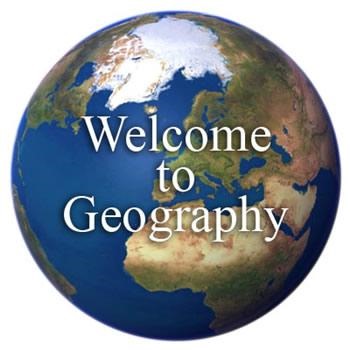Geography – Yearwise Questions – Mountain And Forest – W.B.C.S. Preliminary Examination.
THE ANSWERS ARE MARKED IN BOLD.Continue Reading Geography – Yearwise Questions – Mountain And Forest – W.B.C.S. Preliminary Examination.
WBCS Preliminary Question – 2019
- The Shola forest found in
(A) The Himalayas
(B) The Western Ghats
(C) The Vindhyan
(D) The Eastern Ghats - Which of the following pairs is incorrectly matched?
(A) Bhitarkanika : Olive ridley turtles
(B) Dalma Hills : Wild elephants
(C) Kaziranga : One-horned rhinos
(D) Dachigam : Asiatic lions - Shilong is situated in
(A) The Naga Hills
(B) The Garo Hills
(C) The Khasi Hills
(D) The Mikir Hills - Manasorovar lake lies in
(A) Karakoram Range
(B) Pirpanjal Range
(C) Kailas Range
(D) Mahabharata Range - In India, which type of forest among the following occupies the largest
area ?
(A) Tropical Wet evergreen
(B) Tropical Moist deciduous
(C) Montane Wet temperate
(D) Tropical Dry deciduous - Where is Vansda National Park Located ?
(A) Uttar Pradesh
(B) Gujarat
(C) Rajasthan
(D) Madhya Pradesh
WBCS Preliminary Question – 2018
- Apicco movement associated with nature conservation was led by
(a) Sarala Ben of Ahmedabad
(b) Mira Ben of Rajkot
(c) Pandu Rao Hegde of Sirsi
(d) Sundarlal Bahuguna of Kasauni - The highest peak in India, K2 is also known as
(a) Karakoram
(b) Kashmir
(c) Godwin Austin
(d) Kenneth - The Dogras inhabit mainly
(a) from Southern Pir Panjal region to the Punjab plains
(b) in Kashmir Valley
(c) In Northern Kashmir plains
(d) in Poonch
- The mountain range lying between India and Myanmar is
(a) Lushai
(b) Namcha Barwa
(c) Khasi
(d) Tura - _____is the only active volcano in India.
(a) Andaman Island
(b) Nicobar Island
(c) Baren Island
(d) Pamban Island - The Chotanagpur plateau is primarily composed of
(a) Sandstone, limestone and shale
(b) Granite, limestone and dolomite.
(c) Archaeon rocks of granite and gneiss etc.
(d) Gondwana coal, sandstone and limestone. - The highest Peak in the Andaman Island is
(a) Saddle Peak
(b) Diabol Peak
(c) Car Nicobar
(d) None of the above
WBCS Preliminary Question – 2017
- The Western Ghats is an important mountain system of the west coast
of India. The word ‘Ghat’ means
(A)Port
(B)Stair
(C)Thrust
(D)Gap or pass
WBCS Preliminary Question – 2016
- Xerophytic vegetation is a characteristic feature of :
(A) Chhotanagpur plateau
(B) Khasi hills
(C) Eastern ghats
(D) Kuch - Which one of the following is the junction point of the Eastern Ghats
and Western Ghats ?
(A) Javadi Hills
(B) Anaimalai Hilla
(C) Nilgiri Hills
(D) Shevaroy Hills - Which one of the following mountains has two dissimilar types of
vegetation on its two slopes ?
(A) Aravallis
(B) Vindhyas
(C) Eastern Ghats
(D) Western Ghats - A person overlying India saw the natural vegetation below in the
sequential order of tropical evergreen forest, savanna, dry deciduous and
deciduous. His flight was from
(A) Kolkata to Delhi
(B) Mumbai to Bhubaneshwar
(C) Trivandrum to Delhi
(D) Delhi to Madurai - Forest Cover in which State(s) have shown an increase in the last
two years, according to Forest Survey of India ?
(A) Tamil Nadu
(B) West Bengal
(C) Kerala(as per 2017 report)
(D) Both (A) and (C)
WBCS Preliminary Question – 2015
- Social Forestry scheme promotes
(A) Planting of eucalyptus
(B) Planting of firewood yielding trees
(C) Selling of forest produce
(D) All of the above
WBCS Preliminary Question – 2014
- Where is the Forest Research Institute of India located ?
(A) Delhi
(B) Bhopal
(C) Dehradun
(D)Lucknow - Which one of the following pairs is not correct matched ?
(A) Himalayas → Tertiary Fold Mountains
(B) Deccan Trap → Volcanic Cone Eruption
(C) Western Ghats → Palaeozoic Fold Mountains
(D) Aravallis → Pre Cambrian Re Mountains
WBCS Preliminary Question – 2013
- Neem is a –
(A) Tropical Wet Evergreen Tree
(B) Tropical Moist Deciduous Tree
(C) Tropical Dry Deciduous Tree
(D) Tropical Dry Evergreen Tree - The Eastern and Western Ghats meet in the —
(A) Palni Hills
(B) Nilgiri Hills
(C) Palghat Gap
(D) Annamalai Hills - Forestation prevents
(A) Soil erosion
(B) Pollution
(C) Flood
(D) All of the above - A famous bird sanctuary is
(A) Koladeo Ghana Sanctuary (Rajasthan)
(B) Gir forest
(C) Sunderban
(D) Bandipur National Park
WBCS Preliminary Question – 2012
- The Pir Panjal Range is located in the :
(A) Greater Himalya
(B) Trans Himalayan Area
(C) Lesser Himalaya
(D) Siwaliks - The presence of pneumatophores (breathing root) is found in :
(A) Mangrove plants
(B) Epiphytic plants
(C) Hydrophytic plants
(D) Insectivores plants
WBCS Preliminary Question – 2011
- ‘Sal’ is a type of
(A) Coniferous tree
(B) Evergreen tree
(C) Mangrove
(D) Deciduous tree - Which of the following has the oldest rock in India ?
(A) Himalayas
(B) Indo-Gangetic Plain
(C) The Aravallis
(D) Siwaliks
WBCS Preliminary Question – 2010
- The Himalayas are
(A) Fold Mountains
(B) Block Mountains
(C) Residual Hills
(D) Table land - Forest Protection Committees consist of
(A) Forest Guards
(B) Panchayat Members
(C) Forest Villages, Forest Department and Panchayat
(D) Forest Department officials - Todas are tribals of
(A) Jharkhand
(B) Chhattisgarh
(C) Uttarakhand
(D) Nilgiri Hills
WBCS Preliminary Question – 2009
- This region of India is very important from biodiversity point of view
(A) Eastern Himalayas
(B) Eastern Ghats
(C) Panchmari Hill
(D) Kashmir Valley - Chotanagpur Plateau is made up of
(A) Old igneous and metamorphic rocks
(B) Sedimentary rocks
(C) Aluminum
(D) Lava flows - As per the concept of Scheduled India wild life conservation
concept, Rhinoceros indica is incorporated in
(A) Schedule I
(B) Schedule II
(C) Schedule III
(D) None of the above - Which one of the following statement is not correct ?
(A) Decan Plateau slopes towards the West.
(B) Height of WN Ghats increases from North to South.
(C) WN Ghats are higher than the EN Ghats.
(D) The N/WN part of the Deccan Plateau is made up of lava flows - Himalayas are,
(A) Young fold mountains
(B) Residual mountains
(C) Volcanic mountains
(D) Block mountains
WBCS Preliminary Question – 2008
- The Aravallis represent in ancient
(A) Fold Mountain
(B) Horst
(C)Volcano
(D) Block Mountain - The Himalayas were uplifted from the
(A) Indian ocean
(B) Hercynian Geosyncline
(C) Tethys Geosyncline
(D) None of the above
WBCS Preliminary Question – 2007
- The Palghat gap serves communication inland from this port to Madras:
(A) Goa
(B) Mangalore
(C) Mumbai
(D) Cochin - The forest group covering most of India is
(a)Tropical Moist Deciduous
(b)Tropical Dry Deciduous
(c)Tropical Wet Evergreen
(d) Sub-Tropical Dry Evergreen
WBCS Preliminary Question – 2005
- Baltoro glacier is located in
(63 Km)
(a) Karakoram range
(b) Kailash range
(c) Pirpanjal range
(d) Ladakh range - The Siwaliks are called in Arunachal Pradesh
(a) Dhundwa
(b)Dhang
(c) Miri
(d) Jaskar - The Patkoi bum forms the boundary between
(a)Arunachal Pradesh and Myanmar
(b)Manipur and Nagaland
(c)Assam and Meghalaya
(d)Meghalaya and Nagaland - The Fedchenko, Biafo and Hispar are the names of Himalayan
(a) Glaciers
(b) Lakes
(c) Hill Stations
(d) Trees
WBCS Preliminary Question – 2004
- Which is the highest peak of peninsular India?
(A) Dodabeta
(B) Anai Mudi
(C) Mt Abu
(D) Chikalda - The height of the peak of the world is
(A) 8,848m
(B) 8,567m
(C) 8,150m
(D) 7,990m - Which one of the following is the longest glacier of India?
(A) Siachen(76 km)
(B) zemu
(C) Kolhai
(D) Pindari
WBCS Preliminary Question – 2003
- The oldest mountain Aravalli ranges between
(A) Rajasthan and Delhi
(B) Udaipur and Jaipur
(C) Rajasthan and Agra
(D) Rajasthan and Punjab - Select the pair in which the words are related differently from the others.
(A) West Bengal: Jaldapara
(B) Assam : Kaziranga
(C) Bihar: Deoghar
(D) U.P: Jim Corbett National Park - Highest peak of Peninsular India is
(A) Kalsubai
(B) Anamudi
(C) Mahendragiri
(D)Mahabaleswar - The word ‘Dun’ means
(A) Longitudinal Valley
(B) Transverse Valley
(C) Lake
(D) Peak
WBCS Preliminary Question – 2002
- Where is the largest tiger reserve forest in India?
(Nagarjunsagar – Srisailam)
(A) West Bengal
(B) Uttar Pradesh
(C) Andhra Pradesh
(D) Rajastan - Identify from the following names the person who is associated with the
Chipko movement
(A) BabaAmte
(B) Sunderlal Bahuguna
(C) MedhaPatkar
(D) Arundhuti Roy.
WBCS Preliminary Question – 2001
- The Northern limit of the Deccan plateau is
(A) Southern limit of the Ganga Plains
(B) Tropic of Cancer
(C) Satpura range
(D) Narmada-Son - In which state of India is the valley of flower?
(A) Kashmir
(B) Uttarakhand
(C) Kerala
(D) Tamil Nadu - The erosion of soil by winds can be best controlled by
(A) afforestation
(B) removal of vegetation
(C) dry farming
(D) creation of wind breaks - The National Wildlife Action Plan was adopted by India in
(A) 1963
(B) 1973
(C) 1983
(D) 1993
WBCS Preliminary Question – 2000
- Per capita availability of forest land is highest in
(A) Madhya Pradesh
(B) Assam
(C) Jammu & Kashmir
(D) Sikkim
To know more about W.B.C.S. Preliminary Examination Mock Test – Click Here.
To know more about W.B.C.S. Main Examination Mock Test – Click Here.
Please subscribe here to get all future updates on this post/page/category/website


 +919674493673
+919674493673  mailus@wbcsmadeeasy.in
mailus@wbcsmadeeasy.in







































































































